The subtleties of growing carnations from seeds

Carnation is a rather unpretentious plant to care for with lush and bright inflorescences. For many gardeners, growing a carnation from seed is a great way to decorate an area with colorful double flowers.
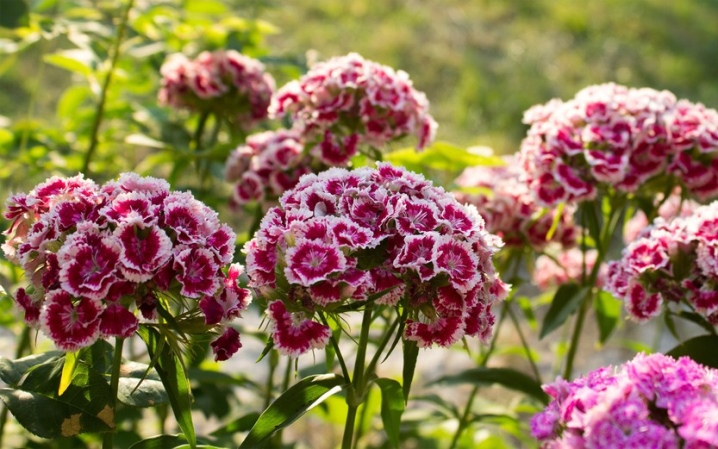
Collection and selection of seed
Before starting work on planting carnations, the gardener has a choice - buy ready-made seeds or prepare them yourself.
Buying ready-made seeds is much easier, but there is a risk of facing an unscrupulous seller. Therefore, it is better to purchase seeds from proven manufacturers in specialized stores.
It can be tricky to seed your own seed as clove seeds need dry, warm and sunny weather to ripen. Flowering occurs in the second half of summer and around the end of August, and then, instead of inflorescences, boxes with seeds appear. It takes about 30-40 days for carnation seeds to ripen, so in the absence of a dry warm autumn, the gardener will have to try to get seeds of the proper quality.

For better preservation of the seeds, a transparent cloth should be wrapped around the flower - gauze or nylon, since the fruits of the carnation, when ripe, spill out onto the ground from the open boxes.
In most garden varieties of carnation, seeds cannot be collected from annual plants, but only from perennial or biennial representatives. For example, the perennial blue imago carnation variety allows harvesting seeds for several years in a row. This variety is distinguished by lush bushes with single blue flowers and looks great both when planted in balcony boxes and pots, as well as outdoors. Self-collected seeds can be stored at home for about 3 years.
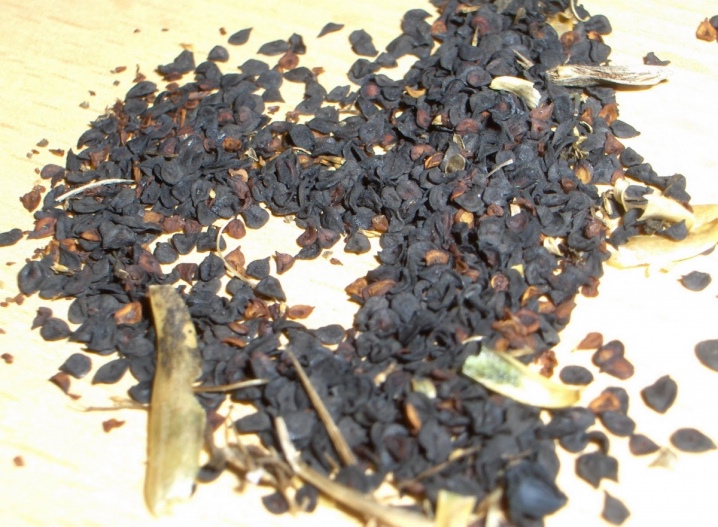
How to grow seedlings at home?
Before planting seeds, it is necessary to prepare containers and soil. The soil can be purchased at a garden store - suitable for both flowering plants and universal soil.
When self-preparing the soil for planting, you need to take black soil, peat and half as much sand. A neutral environment is suitable for cloves, so if the soil environment is acidic, ash can be added. To protect future seedlings from fungal diseases and parasites, self-prepared soil can be frozen in the freezer for about 5 days or steamed in a water bath for about an hour and a half. Immediately before planting, the soil should be shed with a weak solution of potassium permanganate.
Any container will do, you can use wooden boxes, or you can use plastic ones. The main thing is that there are holes at the bottom of the container for the drainage of excess moisture.
Seedlings of carnations should be sown in late February and early March. Some gardeners believe that it is better to do this on a growing moon.

Before loading the soil, the container is poured over with boiling water - to reduce the likelihood of developing fungal diseases. As a drainage layer, you need to put expanded clay, pieces of porcelain or pieces of foam plastic on the bottom. This will maintain the desired moisture content, and will also prevent heavy metal salts and toxic substances from penetrating into the soil.
In the moistened soil, grooves are made at a distance of about 2 centimeters, the seeds should not be planted too often, and then sprinkled with earth. The boxes with the planted seeds should be covered with glass or plastic bags.It is desirable that the temperature in the room does not exceed 20 degrees.
It usually takes about 2 weeks for the seedlings to emerge. After that, the glass or plastic must be removed and the seedlings placed under the light source. If the temperature differs significantly from day to night, it is better to cover the carnation with polyethylene at night. After about 3-4 petals are formed on each seedling, they should be planted in separate containers.
To harden plants, before planting in open ground, you can expose the seedlings for several hours a day outside or on an open window.
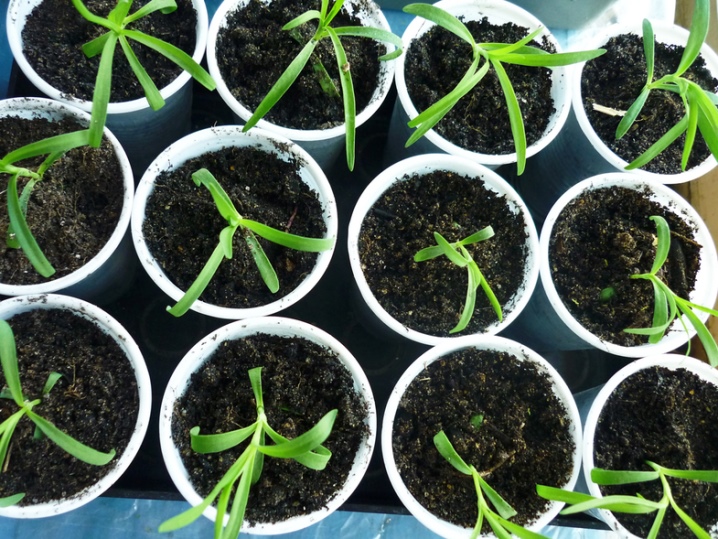
Landing in open ground
It is possible to plant seedlings in open ground after mid-May, but if the weather is cool, then it is better to wait for the beginning of June. The gap between the bushes must be left at least 15 centimeters. If you choose a sunny place for planting, then the flowers on the bushes will be brighter, but the duration of flowering will be reduced, and the bushes themselves will be more compact in size.
The acidity of the soil needs neutral or slightly alkaline; acidic soil conditions should be avoided. You can check the acidity level with litmus test. Wood ash can be added to acidic soil for alkalization.
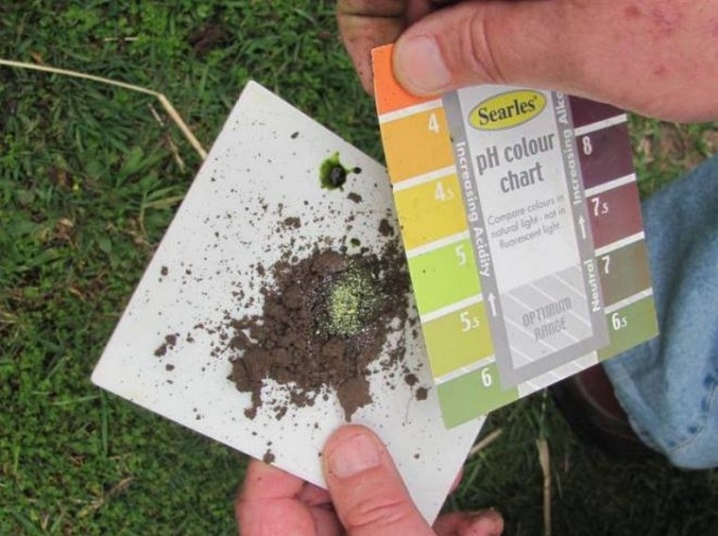
It is not necessary to grow carnation seedlings, as you can sow the seeds directly into the open ground in mid-October.
It is imperative to sow in dry soil, in grooves about a centimeter deep, leave a distance of at least 15-20 centimeters between the grooves. Then the top of the flower bed must be mulched with sawdust or peat. Remove the mulch layer after winter.
It is important to remember that with this method of sowing in the first year, the plant will not bloom, but only bushes with leaves are formed... In the second year, the carnation will be able to produce flowers and seeds. For perennial plants, the seeds can not be collected, but the opened boxes can be poured onto the ground to obtain self-seeding.
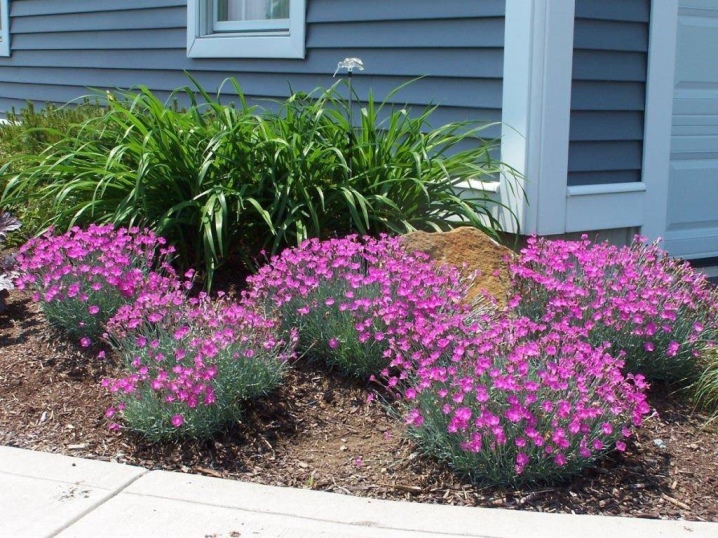
Correct care
Carnation is unpretentious to care for, but in the process of growing it is important not to allow extremes. With excessive watering, rotting of the root system is possible, so it is worth watering no more than 2 times a week. It should be watered at the root, not irrigating the leaves and peduncles, in order to prevent burns and yellowing of the plant.
About a week after planting the seedlings, you can feed the plants with fertilizer containing nitrogen, the second feeding should be carried out when the flower buds are formed with universal fertilizers. If desired, you can carry out the third feeding already directly during flowering.
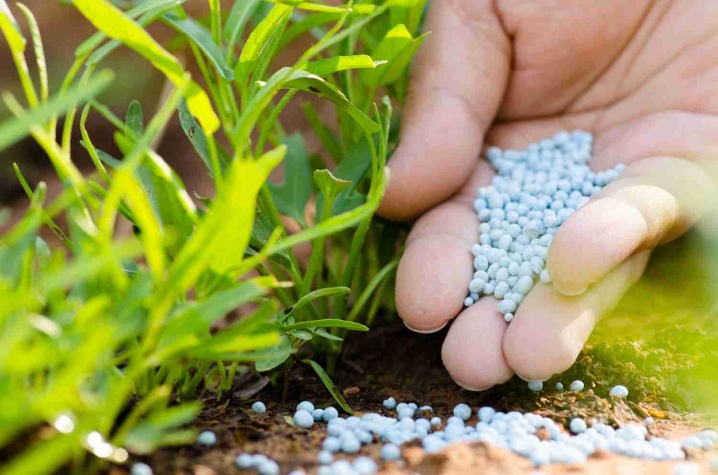
If there are tall shoots, it is advisable to tie them up. Dead shoots, dry and damaged leaves must be removed in time. To increase the size of the flowers, you can trim the side shoots.
Perennial and biennial varieties of cloves usually tolerate cold weather well. But in the case of a small amount of snow in winter, it is better to cover the bushes with spruce branches or sawdust in order to protect the plants from freezing.
With proper care of carnation seedlings, you can grow plants with lush, bright flowers that will delight the eye throughout the second half of summer.
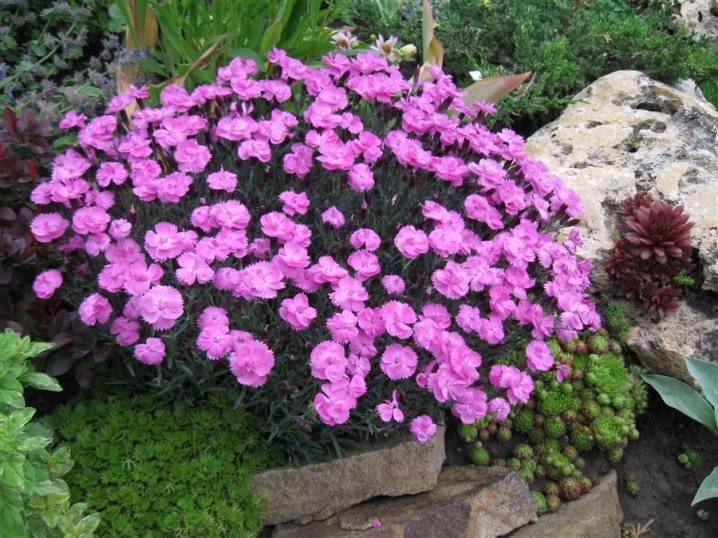
Diseases and pests
Usually, cloves rarely get sick. Basically, young plant seedlings are more susceptible to diseases. Most often, plants get sick due to excessive watering and overfeeding with nitrogen-containing fertilizers.
The main diseases of clove are as follows.
- Fusarium - a disease accompanied by wilting and yellowing of the leaves, the stem turns brown from below and the plant is destroyed from the inside. The diseased bush must be removed from the flower bed and treated with any fungicidal agent. As a preventive measure, it is important to avoid over-watering.
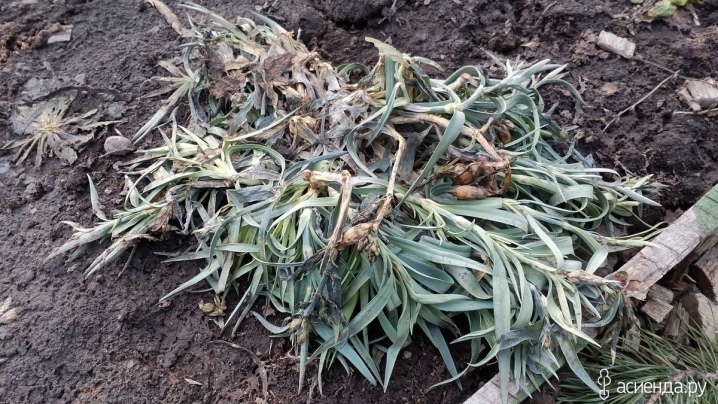
- Mosaic - a disease in which spots appear on young leaves, tissue dies off in the place of spots, which leads to the formation of holes. The flowers become variegated.This disease cannot be treated; diseased bushes must be discarded.
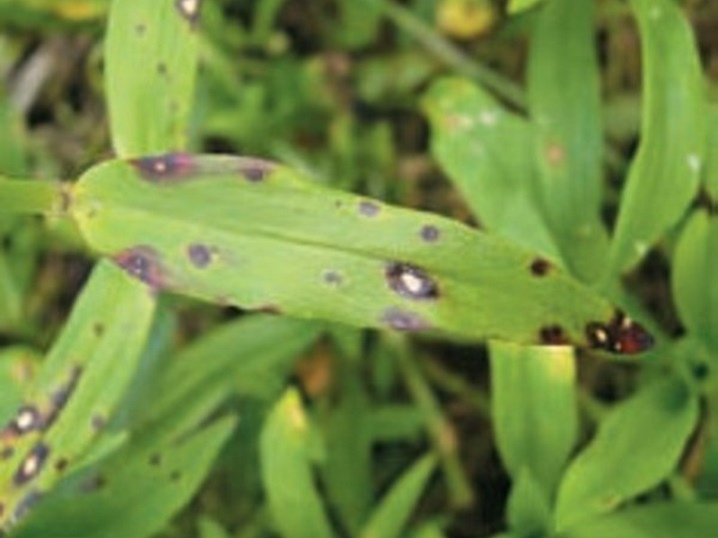
- Rust - disease, accompanied by the formation of convex rusty spots on the underside of the leaves. The disease develops due to excessive moisture with excessive watering and dense planting of bushes, as well as with excessive feeding with nitrogen-containing fertilizers. Diseased plant organs must be removed, and the plant must be treated with "Baktofit" or Bordeaux mixture.
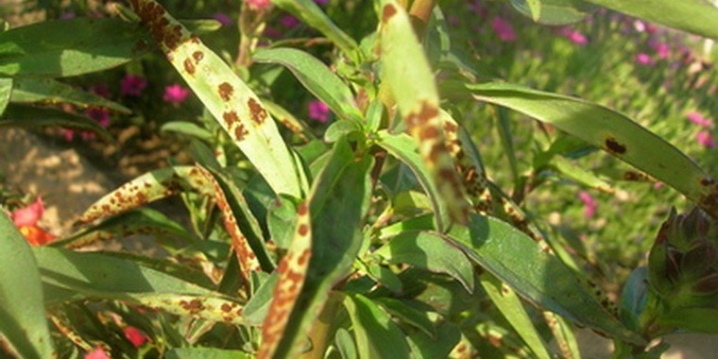
The root system of carnations can be damaged by parasites such as bears that live in the soil. Unfortunately, you can only deal with them manually, collecting them when digging or loosening.
For the prevention of fungal diseases, plants can be watered with fungicidal agents, but not more often than once every 10 days.
For information on how to grow a carnation, see the next video.

































































































The comment was sent successfully.